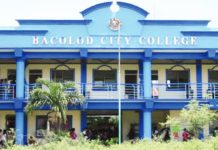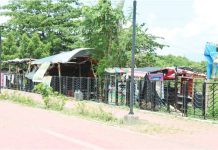If I gave you everything that I owned and asked for nothing in return
would you do the same for me as I would for you?
Or take me for a ride, and strip me of everything including my pride
But spirit is something that no one destroys
And the sound that I’m hearing is only the sound
The low spark of high-heeled boys…
— Songwriters: Jim Capaldi/Steve Winwood
— Performed by: Traffic
LET’S CONFUSE the Frappuccino-infused trendy so-called millennials a.k.a. wokes and leave them staring into spaced in utter amazement.
Yes, we’re going to talk about music, you know, the kind performed by real musicians using real musical instruments, not the ones by someone playing on a laptop.
The music is jazz fusion and progressive rock, the genre that not necessarily makes the so-called millennials bewitched but certainly bothered and bewildered.
And we’re talking about “The Low Spark of High-Heeled Boys”,the fifth studio album of English rock band Traffic, released in 1971.
It was their first album to feature percussionist Rebop Kwaku Baah and their only album to feature drummer Jim Gordon and bassist Ric Grech; he had previously worked with Traffic singer/multi-instrumentalist Steve Winwood in the short-lived supergroup Blind Faith while Gordon had played with another former Blind Faith member, Eric Clapton, in the similarly short-lived Derek and the Dominoes.
As with other Traffic albums, “The Low Spark of High-Heeled Boys” featured different forms and offshoots of rock, including jazz rock, progressive rock, as well as classic rock and roll.
There was a school of thought, a rather minor debate, that the song/album is about male homosexuality, ladyboysand cross-dressers with the seemingly obvious reference to “high-heeled boys”. I’m going to disappoint the fans of Jeffrey Laude and Greg Diez, it is not. Far from it.
This narrative about the song/album’s meaning from a review on www.songfacts.com offers a more plausible explanation bearing in mind the pop culture in the early ‘70s in “swinging London”.
At the time this song was written, street slang for heroin was “boy”’ and cocaine was “girl”.
A “high-heeled boy” referred to a mixture of heroin and coke, called a speedball. Mixing these two opposite drugs is said to counteract their negative effects, leaving the best of each. “Don’t try this at home.” It’s very dangerous, many people die.
The “low spark” is the description of the rush brought on by injecting the speedball (high-heeled boy).
The man in the suit making profits on the dreams of his customers is the dealer.
Shot dead by the gun that didn’t make any noise. But it wasn’t a bullet that laid him to rest. The gun was a hypodermic syringe he died from overdose.
And Traffic were an English rock band, formed in Birmingham, in April 1967 by Steve Winwood, Jim Capaldi, Chris Wood and Dave Mason. They began as a psychedelic rock group and diversified their sound through the use of instruments such as keyboards like the Mellotron and harpsichord, sitar, and various reed instruments, and by incorporating jazz and improvisational techniques in their music.
They’re certainly not the ones on EDSA or in the intersection of Bonifacio Drive, General Luna Street and Iznart Street but if Trafficwere to play live in these streets it would certainly cause traffic.
Excerpts from www.songfacts.com:
Traffic’s fifth album shows the band at the peak of its powers. The songwriting is superlative, the jams are soaring, and the band’s two constituent modes were never better fused. The album’s title track is probably Traffic’s greatest moment. “The Low Spark of High- Heeled Boys” is something actor Michael J. Pollard wrote to Jim Capaldi while both were traveling in Morocco. Traffic interpreted it to refer to the grassroots power of the counterculture, and the song’s anthemic jam resounds as a mysterious tribute to the Woodstock generation.
And from ultimateclassicrock.com:
Of all styles, jazz seemed to come to the forefront on The Low Spark of High-Heeled Boys, especially on the nearly 12-minute title track. The song was conjured out of studio experimentation, with Capaldi even writing the lyrics to the third verse just before Winwood sang them.
The meandering song, although never released as a single, became a staple of ’70s FM radio, famous for its length, hazy mood and electronic saxophone solo.
The Low Spark of High-Heeled Boys remains the band’s lone platinum release in the US, known for its mind-altering sounds, in addition to its famous die-cut album cover, which created an optical illusion.
Decades later, Low Spark is considered by many fans and critics to be Traffic’s high point.
On a personal note, in the early ‘70s this album was my introduction to that genre we call jazz-rock fusion, a perfect soundtrack for getting high on a lazy afternoon./PN





